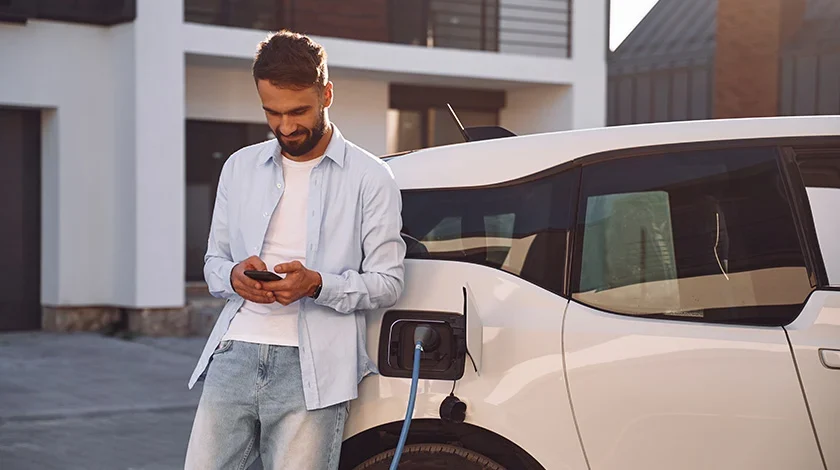Co-authored by Gabriella Bovino
Introduction
With climate change persisting as an ever-present issue, more people and businesses are exploring how they can tackle climate changes. So, it‘s good to be reminded of tax concessions for employees and employers contributing towards tackling climate change, particularly in the electric vehicle (EV) space.
The Australian Government has incentivised businesses to purchase and provide employees with EVs as part of their remuneration package by removing fringe benefits tax (FBT) payable on EVs.[1] The FBT exemptions apply retrospectively from 1 July 2022[2] for zero or low emission eligible vehicles that are first held and used on or after 1 July 2022. As of 1 April 2025, exemptions will not apply to plug-in hybrid vehicles.[3] This article will explain when and how you can capitalise on these benefits.
So how does it work?
Step 1: Satisfy the requirements of car fringe benefit
A car fringe benefit arises where there is a car, held by the employer (or its associate), with an arrangement with employer (or the entity who holds the car) to allow the employee to use the car for private use.
Step 2: Satisfy the requirements of the section 8A exemptions
The car benefit is exempt from FBT if:
- it was provided to a current employee.
- the car is provided is a zero or low emissions vehicle;
- no amount of luxury car tax[4] was paid on the car before the benefit was provided; and
- the entity must provide the car fringe benefit to an employee for privateuse[5] after 1 July 2022.
Zero or low emissions vehicles
To satisfy this requirement, the vehicle must be either:
- a battery electric vehicle;[6]
- a hydrogen fuel cell vehicle;[7] or
- a plug-in hybrid electric. However, these hybrid vehicles will not be considered a ‘zero or low emission vehicle’ from 1 April 2025.[8]
Luxury car tax limit
The FBT exemption can only apply if luxury car tax isn’t payable on any sale of the car. This means that the value of the eligible vehicle in FY2024 can’tt be more than $89,332 (GST inclusive) if it is ‘fuel efficient’,’ (meaning it has a fuel consumption of fewer than seven litres per 100 km[9]) or $76,950 (GST inclusive) for all other vehicles.
Can I use the FBT exemption on any other ‘car expenses’ associated with the EV?
It depends on the expense. Types of exempt expenses include registration and insurance expenses of the EV, repairs and maintenance including battery repairs or “like-for-like” replacements and fuel (such as electricity for charging the battery).[10]
What about charging stations?
According to the Australian Taxation Office, exempt EV-related expenses don’t include home charging stations and are likely to be subject to FBT as a property or expense payment fringe benefit.[11]
Employers could consider providing charging station at business premises. Caution is advised, as an employee parking their car at the station for more than four hours could become a car parking fringe benefit which may be subject to FBT.
For FBT purposes, if an employee has a home charging station for their EV (excluding plug-in hybrid models), a charging rate of 4.20 cents per km can be used as a rate to reimburse employees for the cost of charging their EV at their home (this amount derived from the rate is exempt as a ‘car expense’).[12]
An example
The following example demonstrates the tax savings from salary packaging a novated lease of a zero to low emissions vehicle. To do so, we compare a (lower price) petrol car with a (higher price) electric car.
Assumptions
- Employee annual salary – $156,000
- Lease Term – Four years
- A choice must be made between a petrol car (FBT payable) or electric car (FBT exempt)
- Running costs (and the balloon payment) of both petrol and electric cars are outlined below:
| Type of car | Petrol | Electric |
| On-road Costs | $52,172 | $78,894 |
| Lease Repayments | $854 per month | $1,316 per month |
| Running Costs | $562 per month | $358 per month |
| Balloon Payment | $19,670 | $30,384 |
The comparison table below outlines the tax savings that accrue to the employee over the course of the four-year period.
| Petrol Car | Electric Car | |||
| No Package | Salary Package | No Package | Salary Package | |
| Gross Salary | 156,000 | 156,000 | 156,000 | 156,000 |
| Less: metor vehicle costs | 0 | (16,992). | 0 | (20,088). |
| Less: FBT payable | 0 | (10,202). | 0 | 0 |
| Addback: corporate tax deduction | 0 | 3,061 | 0 | 0 |
| Addback: input tax credits | 0 | 5,356 | 0 | 6,275 |
| Remaining cash salary | 156,000 | 137,223 | 156,000 | 142,187 |
| Income tax and Medicare Levy FY22-23 | (45,127). | (36,719). | (45,127). | (39,809). |
| After-tax lease and running costs | (16,992). | 0 | (20,088). | 0 |
| Net After-tax cash | 93,881 | 100,504 | 90,785 | 102,378 |
| Tax savings (Year 1) | 0 | 6,623 | 0 | 11,593 |
| Tax Savings (Years 2 – 4) | 0 | 1,880 | 0 | 5,708 |
| Savings over 4 years | 0 | 12,261 | 0 | 28,717 |
| Balloon Payment | (19,760). | (19,760). | (30,834). | (30,834). |
| After-tax payment required | 19,760 | 7,409 | 30,834 | 2,117 |
The comparison table shows that:
- The tax savings over four years from salary packaging the petrol car (100% subject to FBT) is $12,261 and can be used towards the balloon payment, plus an additional outlay from the employee of $7,409.
- The tax savings over the same period for an electric car (assuming the FBT exemption applies) is $28,717 and can be used towards the balloon payment, plus an additional outlay from the employee of $2,117.
The example shows that, even though the electric car has a higher on-road cost and a higher balloon payment, the tax savings associated with salary packaging the electric car are greater than the petrol car.
To learn more about the Fringe Benefit Tax exemption for electric vehicles, please contact our Taxation team.
[1] The new exemption is by way of the Treasury Laws Amendment (Electric Car Discount) Act 2022 (the Amending Act), amending the Fringe Benefits Tax Assessment Act 1986 (FBTAA).
[2] Explanatory Memorandum to the Treasury Laws Amendment (Electric Car Discount) Bill 2022 (Explanatory Memorandum).
[3] Schedule 2 of the Amending Act.
[4] within the meaning of the A New Tax System (Luxury Car Tax) Act 1999) (LCTA).
[5] Section 7(1) of FBTAA.
[6] Section 8A(3) of FBTAA.
[7] Section 8A(4) of FBTAA.
[8] Ibid.
[9] As a combined rating under national road vehicle standards in force under section 12-1(4) of the Road Vehicle Standards Act 2018.
[10] See section 136(1) of the FBTAA.
[11] Australian Taxation Office Fact Sheet, “Electric vehicles and fringe benefits tax”, published 24 February 2023, Siebel/TDMS Reference Number: 1-WQGMRKG.
[12] PCG 2023/D1 – Electric vehicle home charging rate – calculating electricity costs when charging a vehicle at an employee’s or individual’s home.














